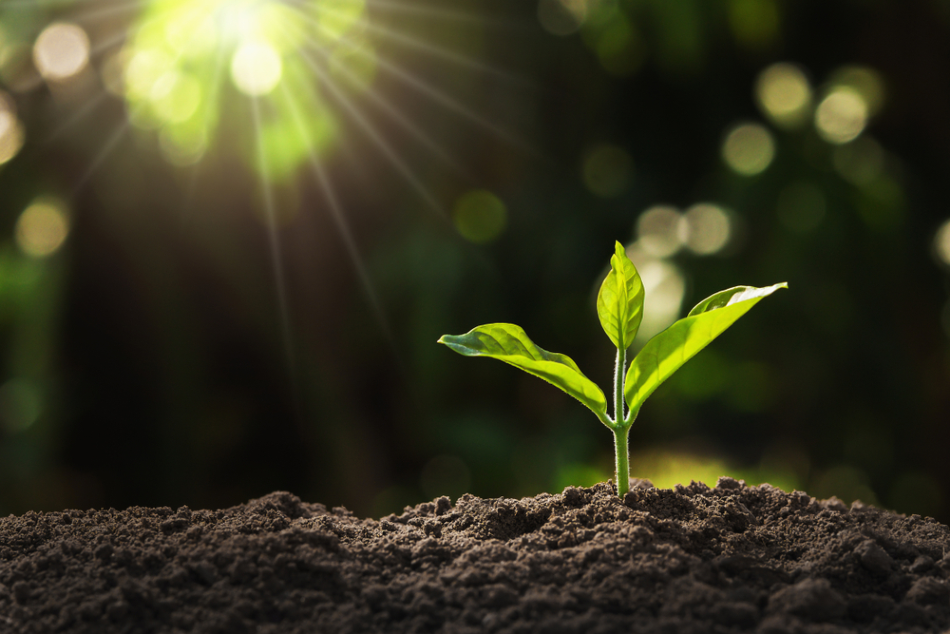
Image Credit: lovelyday12/Shutterstock.com
What is a Nanobionic Plant?
Plant nanobionics is a new area of research that focusses on imparting many novel characteristic features to a plant with the help of different types of nanoparticles.
Michael Strano, Professor of Chemical Engineering, Seon-Yeong Kwak, post-doctoral researcher, and the research team at Massachusetts Institute of Technology (MIT), have incorporated specific nanoparticles into the leaves of a watercress plant (Nasturtium officinale), which resulted in the emission of soft light for almost four hours.
The research team is very optimistic about the result and is certain that, with further optimization, nano-engineered plants could emit brighter light to appropriately illuminate a workspace.
Previous research has revealed that genetically engineered plants have a visible glow that sustains the entire life cycle of the plant. However, recent technology involving the insertion of specialized nanoparticles is much more efficient and glows brighter than the previous genetically engineered tobacco plants. No additional chemicals are needed to maintain luminescence.
Nanobionics engineering may contribute to the significant development of biomimetic materials with enhanced efficiency. This has a key role in light-harvesting and in the determination of plants’ biochemical pathways.
Mechanism Behind the Creation of a Nanobionic Plant
Existing technology associated with the production of light-emitting plants involves the incorporation of luminescent genes of bacteria or fireflies into tobacco plants through genetic engineering. However, the research team at MIT has developed a method, where it uses an enzyme luciferase that makes fireflies glow.
The light is emitted when the enzyme luciferase interacts with a molecule called luciferin. Co-enzyme A also assists this process by removing byproducts that have an inhibiting effect on luciferase activity.
Each of these three components is packed into a different type of nanoparticle carrier. These selected nanoparticles are classified as safe by the U.S. Food and Drug Administration. The nanocarriers not only help each component to reach the targeted part of the plant, but they also prevent the components from reaching the threshold level that could be toxic to the plants.
In this research, silica nanoparticles of approximately ten nanometers in diameter have been used to carry the luciferase enzyme. However, poly lactic-co-glycolic acid (PLGA) polymers were used to carry luciferin and chitosan for coenzyme A. These nanoparticles were suspended in a solution and the plants were immersed in them. They were then exposed to high pressure so that the nanoparticles could enter the leaves of the plant through stomata (tiny pores).
The particles carrying the luciferase enzyme are designed to enter the mesophyll cells of the leaves, whereas particles carrying the luciferin and coenzyme A accumulate in the extracellular space of the mesophyll.
The luciferin is gradually released from the PLGA particles and enters the plant cell, where a chemical reaction performed by luciferase makes luciferin glow. The researchers believe that an increase in the emission of light and enhancement in the duration of emission can be made possible with optimization in the concentration and release rates of the components.
At present, the nano-engineered watercress plant can emit 50% less light as a commercially available 1-microwatt LED. However, the nanobionic plant is 100,000 times brighter than already existing genetically engineered tobacco plants. This plant also has the capacity to stop light emission by using a compound that inhibits the activity of light-emitting nanoparticles.
How is the Nanotechnology-Based Approach Better than Existing Technology in the Production of Light Emitting Plant?
Previous methods used for the production of light-emitting plants were mainly based on genetic engineering. This is a laborious process that involves the incorporation of luciferase genes into the plant. The plants commonly used in the genetic studies were tobacco plants and Arabidopsis thaliana, which yielded extremely dim light.
However, the new nanotechnology-based method developed in Strano’s lab could use any type of plant, for example, kale, watercress, arugula, and spinach.
The Importance of Bioluminescent Fungi
In recent research published in Nature Biotechnology, the importance of bioluminescent fungi has been shown.
The authors of the paper claim that the existing technique, which utilizes bacterial bioluminescence genes to engineer an auto luminescence plant, is a laborious process and fails to yield enough light.
The production of a genetically engineered plant using DNA of bioluminescent fungi, which contains genetic code, enables the synthesis of luciferin from caffeic acid.
The caffeic acid cycle, which is a metabolic pathway responsible for luminescence in fungi, is also found in plants. Researchers believed that the reallocation of some caffeic acid in the genetically engineered plant could initiate the biosynthesis of luciferin, similar to that of bioluminescent fungi. They found that the flowers glow the brightest followed by younger parts of the plant. However, nanobionic plants produced at Strano’s lab at MIT still glow the brightest.
The Future of Nanobionic Plants
Researchers have envisioned that nanobionic plants with light-emitting properties could be used to light indoor areas at low-intensity and can transform trees into self-powered streetlights.
The cumulative effect of self-repairing plants enable them to produce their own energy and be adaptable to the outer environment. This widens the potential for plant nanobionics. Professor Strano stated that their discovery could have a positive effect on saving energy, as 20% of the world’s energy consumption is directed towards lighting.

 How do Nanoparticles Affect Plant Function?
How do Nanoparticles Affect Plant Function?
References and Further Reading
Mitiouchkina, T., Mishin, A.S., Somermeyer, L.G. et al. (2020) Plants with genetically encoded autoluminescence. Nature Biotechnology. https://doi.org/10.1038/s41587-020-0500-9
Trafton, A. (2017) Engineers create plants that glow. [Online] MIT News. Available at: http://news.mit.edu/2017/engineers-create-nanobionic-plants-that-glow-1213 (Accessed on 2 June 2020).
Seon-Yeong Kwak et al. (2017) A Nanobionic Light-Emitting Plant. Nano Letters. 17 (12): 7951-7961; https://doi.org/10.1021/acs.nanolett.7b04369
Disclaimer: The views expressed here are those of the author expressed in their private capacity and do not necessarily represent the views of AZoM.com Limited T/A AZoNetwork the owner and operator of this website. This disclaimer forms part of the Terms and conditions of use of this website.